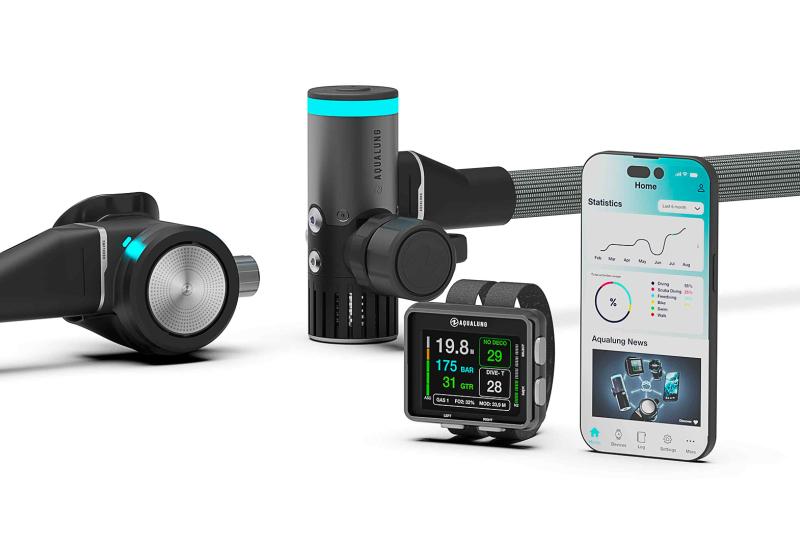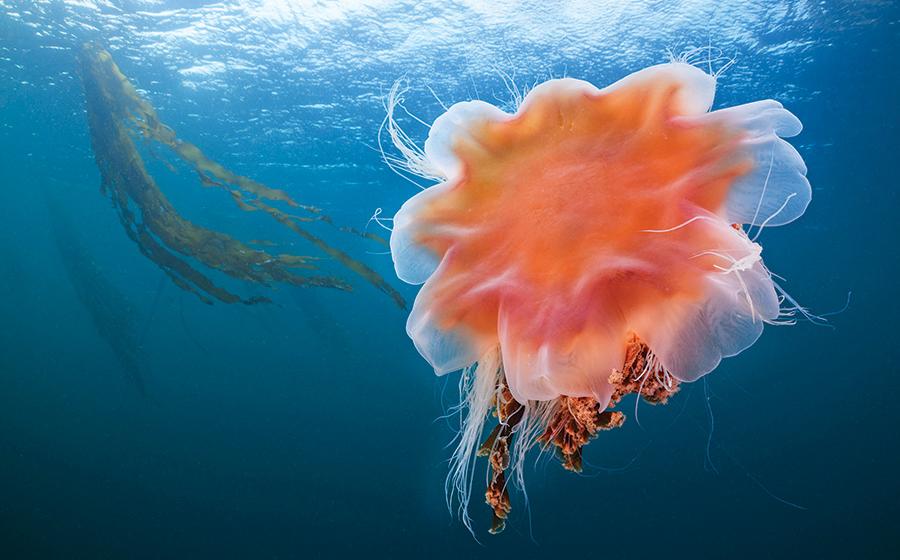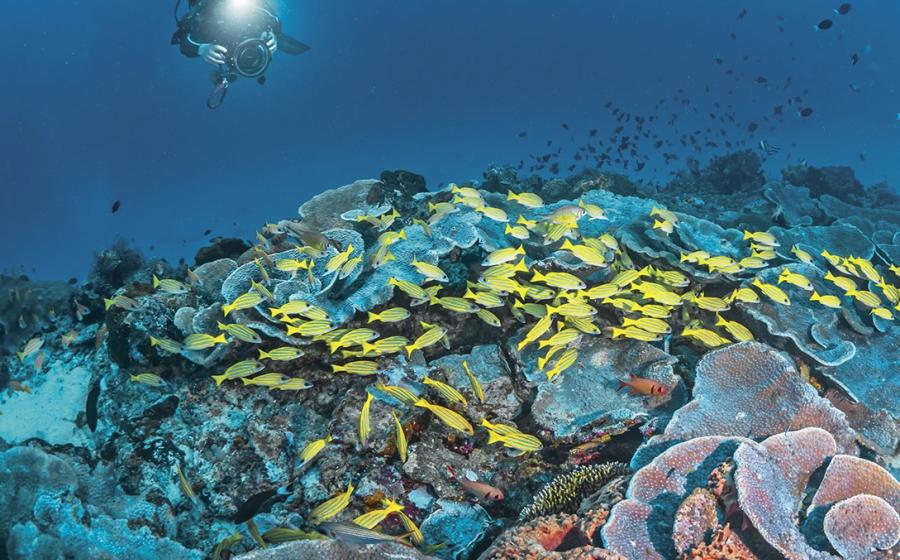Best Scuba Regulators of 2024 Reviewed
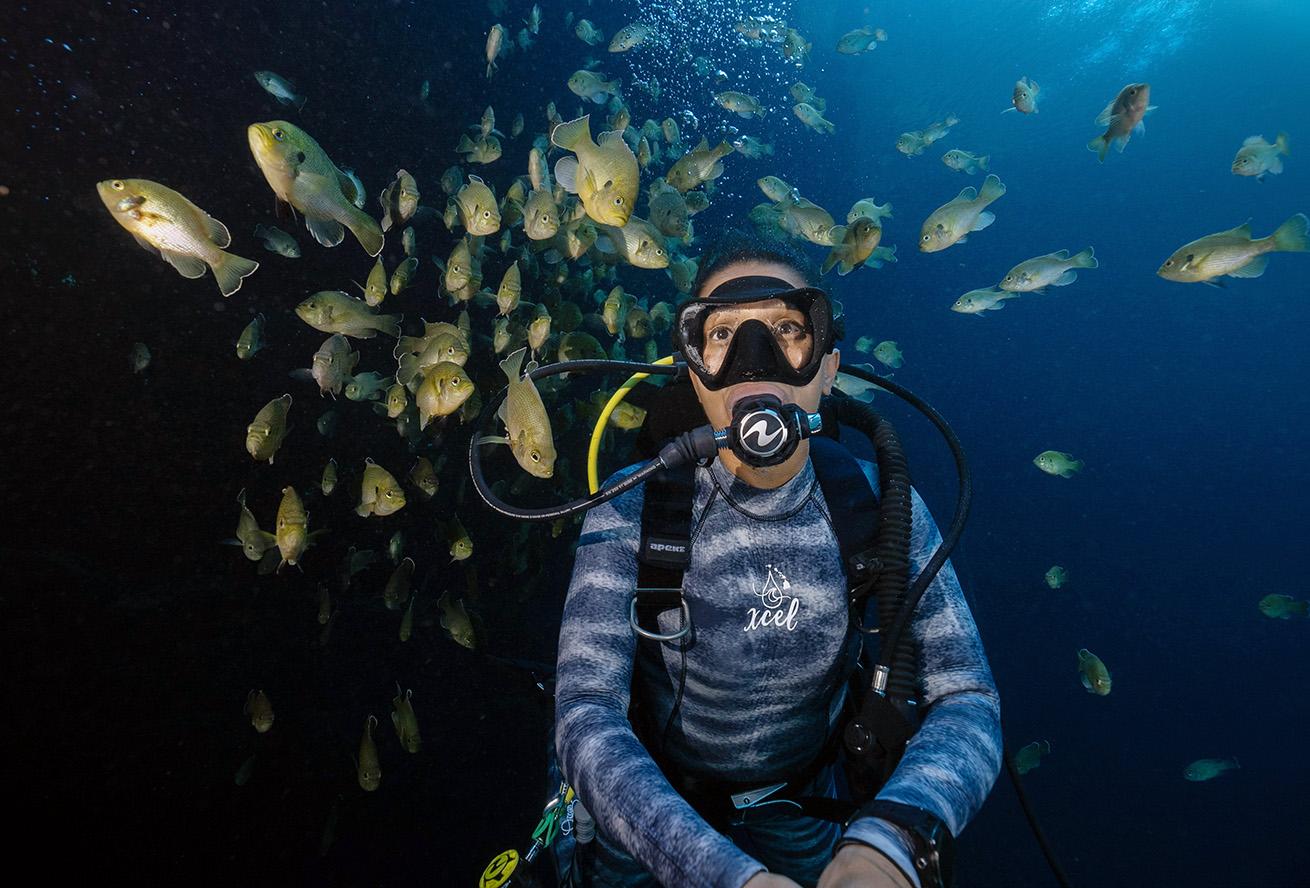
Kristin PaterakisDivers test regulators at Blue Grotto Dive Resort in Florida.
Head-to-Head Testing
How We Test
Objective testing was conducted on an ANSTI wet breathing simulator that measures effort (“work of breathing”) required to move air through a reg as it is subjected to a series of depths and breathing rates. The testing was done at Dive Lab, a commercial testing facility in Panama City Beach, Florida.
Tests are performed at an HP supply pressure of 750 psi (+/- 25 psi). Regs are tested in theface-forward position, and those with breathing adjustments are set at the wide-open/nofree-flow point.
The simulator pressurizes the chamber to simulate depths of 132 feet of seawater, 165 fsw and 198 fsw. Each “breath” of the machine moves a specified amount of air, called the tidal volume, through the reg. We do this at 2 liters/20 breaths per minute, 2.5 L/25 bpm and 3 L/25 bpm. Multiplying the tidal volume by the breathing rate gives you the respiratory minute volume (RMV).
Related Reading: Your First Set of Scuba Gear: A Buyer's Guide
Ergonomic testing was conducted at Blue Grotto Dive Resort in Williston, Florida, by a team of divers who evaluated each reg in the following categories, assigning a score from 5 (excellent) to 1 (poor), and recording observations about performance.
» Ease of breathing: How well does the reg deliver air when you are propelling yourself forward in a standard swimming position? Face-up position? Headdown position?
» Wetness: During normal swimming, how dry does the reg breathe? Face-up position? Headdown position?
» Bubble interference: How well does the reg deflect bubbles from your field of view?
» Ease of clearing: How difficult is it to clear the reg by exhalation or using the purge?
» Purge stiffness: Is it soft and progressive or forceful and abrupt?
» Resistance to free-flow: Is the Venturi control easy to use and effective at blocking free-flows?
» Breathing adjustment: Is the adjustment easy to find and use? Is it effective?
» Comfort of second stage: Overall comfort, taking into account its size, shape and weight.
» Noise: Does the reg operate with excessive noise?
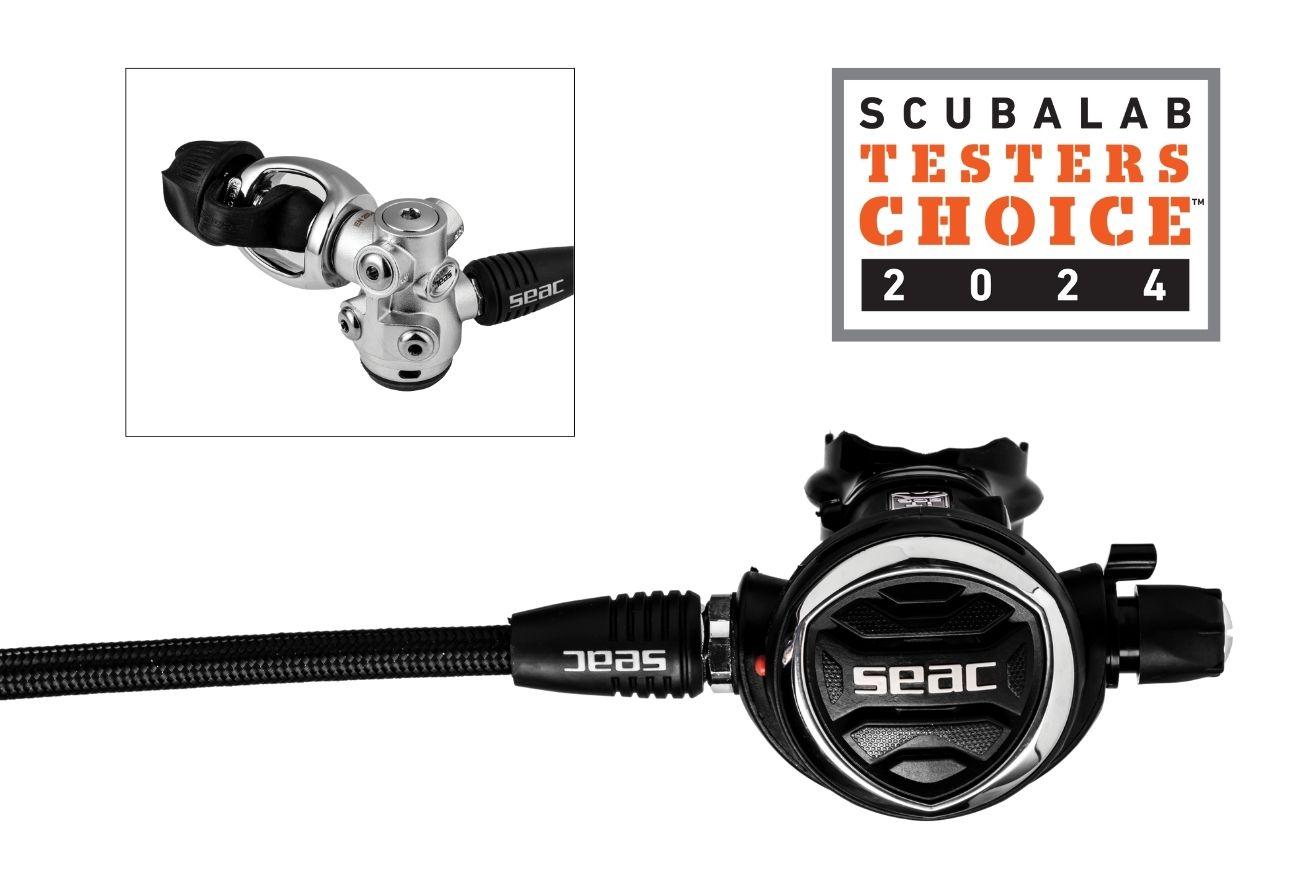
Regulators
SEAC
IT500
On the simulator, this reg performed consistently across depths, with little change in effort. Even at 280 feet, it provided good work of breathing. In the water, testers were impressed by its quiet, easy breathing. “Super easy air delivery” and “airflow is excellent” are some ways divers described it.
It scored excellent for ease and dryness of breathing in swim position. Some testers reported wetness in other positions, but still scored it very good for dryness and ease of breathing when face up and head down. The large adjustment knob is easy to use and has a noticeable effect on inhalation. The Venturi is very effective at taming free-flows.
The reg scored excellent for ease of clearing, thanks to its powerful purge. The second stage scored very good for comfort, but most divers weren’t fans of the flanges on the mouthpiece. Ports on the lightweight first stage have plenty of space between them for simple, convenient hose routing.
Offering great performance and ergos with a confident, quiet operation, the IT500 was an overwhelming favorite of test divers. It is our Testers Choice for regulators.
MSRP $529
CONTACT seacsub.com
"Extremely smooth, low-effort breathing."
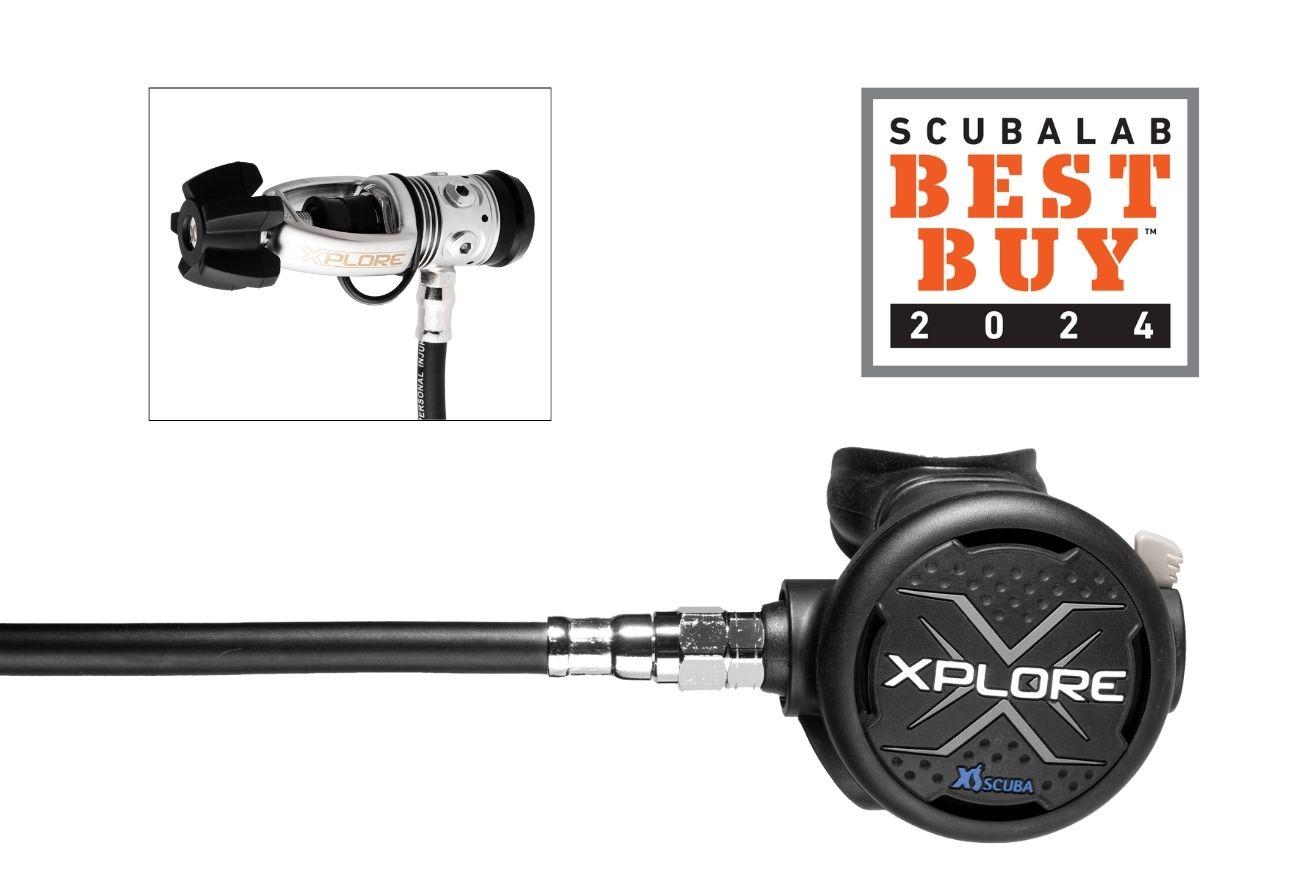
XS SCUBA
Xplore
Despite its lower than average price, the Xplore held its own, earning excellent simulator scores at most work rates and depths. Performance began to taper off sooner than other regs in the test, but still provided both very good and good work of breathing at the extremes.
It scored very good for ease of breathing in swim and head-down positions and good for face-up. Some divers noted it could be a bit wet in odd positions, but it still scored excellent for dryness in swim and very good for other positions. Clearing is very easy.
Divers liked the supple, responsive purge, which can provide just a trickle of gas, a full blasting torrent or anything in between. The adjustment requires a hex key. It allows for a stable, precise tuning of breathing effort, but it can take a few dives to dial in. It also has a direct effect on the Venturi’s ability to subdue or simply slow a free-flow.
The second stage is very comfortable for its size. The placement of the ports on the first stage can be awkward to route. Overall, this reg offers a great mix of features and performance without breaking the bank. It is our Best Buy.
MSRP $329.95
CONTACT xsscuba.com
Related Reading: XS Scuba Xplore: ScubaLab Best Buy 2024
"Breathes nice and smooth, with easy inhalation."
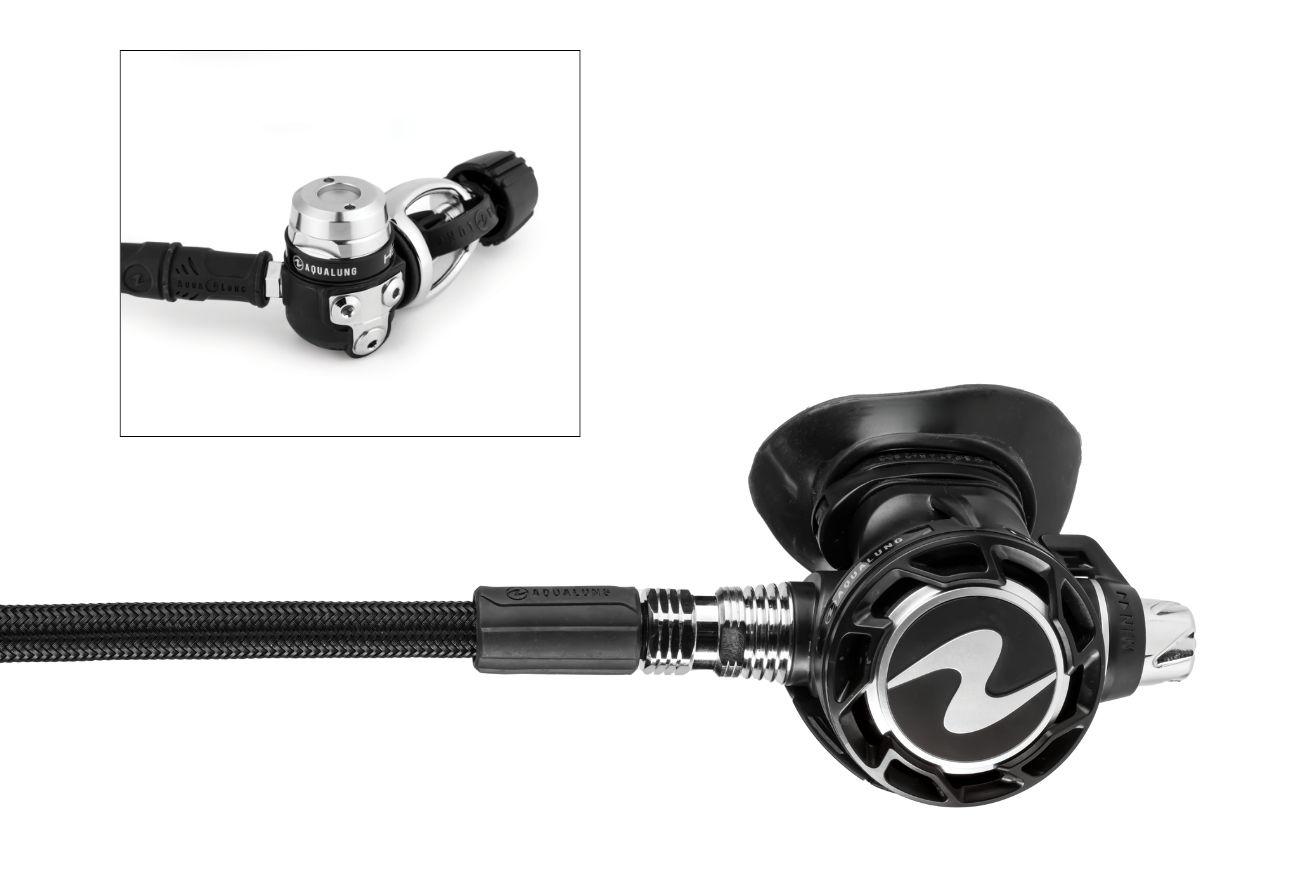
AQUALUNG
Helix Compact Pro
This travel-ready system combines great performance with lightweight comfort and is easy to pack. “So small! Nice and compact!” one tester commented. Divers scored the reg excellent for ease of breathing in swim position, very good in face-up and headdown positions, and very good for dryness overall.
“Very smooth and dry natural breathing,” one tester noted. On the simulator, the reg gave excellent and very good performance at recreational depths and beyond, and only began to drop at extreme breathing rates and depths. The teeny-tiny second stage scored excellent for clearing and very good for bubble interference.
The Venturi and breathing adjustment both scored very good for effectiveness. The second stage includes two high-pressure and four low-pressure ports in a T-shaped confi guration. It also includes an auto-closure device, which protects the reg from water and debris when it’s not connected to a tank.
With an incredibly lightweight, compact design and great breathing performance, the Helix Compact Pro was a favorite of multiple test divers.
MSRP $699
CONTACT us.aqualung.com
"Super smooth start/stop of breathing makes for very low effort."

ATOMIC
B2X
The B2X earned excellent simulator scores almost across the board. Test divers scored it very good for air delivery and dryness in all positions. “Consistently easy and dry” and “so smooth you can’t even feel it crack on inhale” were some ways divers described it.
While breathing performance didn’t seem to be affected, many divers noted that our sample made distracting noises when breathing hard. The second stage scored very good for comfort and bubble interference. A ball swivel connection eliminates pulling, further enhancing the experience.
“A pleasure to use,” one diver noted. The automatic Venturi control scored good for resistance to free-flow. Divers felt the breathing adjustment was stiff but had a noticeable effect on inhalation. The purge requires more force than usual, but provides a responsive, variable flow rate. It scored very good for clearing.
The second stage features a DLC coating, two high-pressure ports, a swiveling turret with five low-pressure ports and an optional environmental seal. This reg offers premium ergos, rugged durability and easy breathing.
MSRP $1,499.95
CONTACT atomicaquatics.com
"Smooth breather and very comfortable."
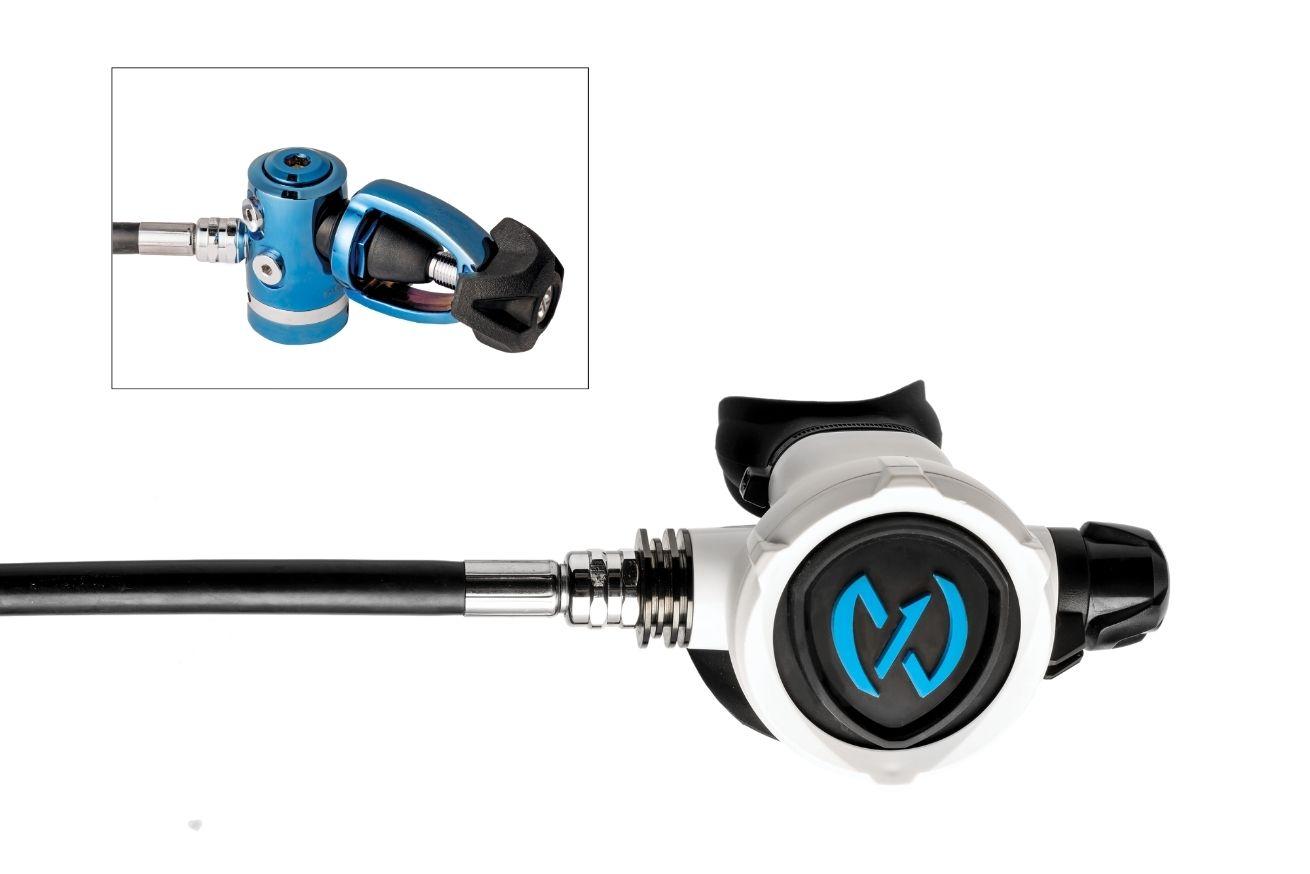
NEX
Monterey Original With 2.5 - Inch Balanced Adjustable Second Stage
Described by test divers as “lightweight” and “super compact,” this regulator’s second stage scored very good for comfort. Test divers also really liked the mouthpiece, which earned the highest score in the test. The supple, responsive purge earned very good scores for ease of use and ease of clearing.
The large, grippy breathing adjustment provides, in the words of one test diver, a “massive adjustment range” that allows the user to fine-tune breathing resistance to their liking—just keep in mind that the gas flow afforded by the wide-ranging adjustment can make the reg susceptible to powerful free-flows if left in the fully open position.
The modular first stage has two high-pressure and four low-pressure ports, and can be upgraded with additional low-pressure ports after purchase. Test divers noted some rasping and rattling in use, but still scored the reg good for ease of breathing and dryness in all positions. On the simulator, the Monterey provided excellent work of breathing across all but our most extreme scenarios.
MSRP $929.98
CONTACT nexdive.com
"Great size and ergonomic controls."
Why Do We Test At These Depths And Breathing Volumes?
40 RMV at 132 fsw: This represents 20 breaths per minute times a 2-liter volume. This is pretty much the maximum recreational depth at a somewhat aggressive breathing rate.
62.5 RMV at 165 fsw: This rate represents the European conformance standard EN250. This is also the depth and breathing rate commonly used by manufacturers when determining a reg’s performance. This is the U.S. Navy’s Class A test depth and breathing rate.
75 RMV at 132 fsw or deeper: This simulates the potential demand at maximum recreational depth for a diver at an extremely heavy work rate.
The breathing simulator monitors how much effort is required to “breathe” in and out, measuring the work of breathing in joules per liter (j/L). As depth and breathing rate increase (and with them, the density of the air being moved), the work gets harder. Many modern regs are able to perform at 40 RMV at 132 fsw with less than 1 j/L of work.
If a reg doesn’t exceed the test parameters in our standard tests—the toughest of which a human diver would be hard-pressed to keep up for more than a couple of minutes—we push it to more extreme conditions. Regs aren’t tested for a pass/fail grade but to objectively gauge their performance in carefully controlled conditions. You can see how each reg performed on the simulator in the charts that accompany each review.




